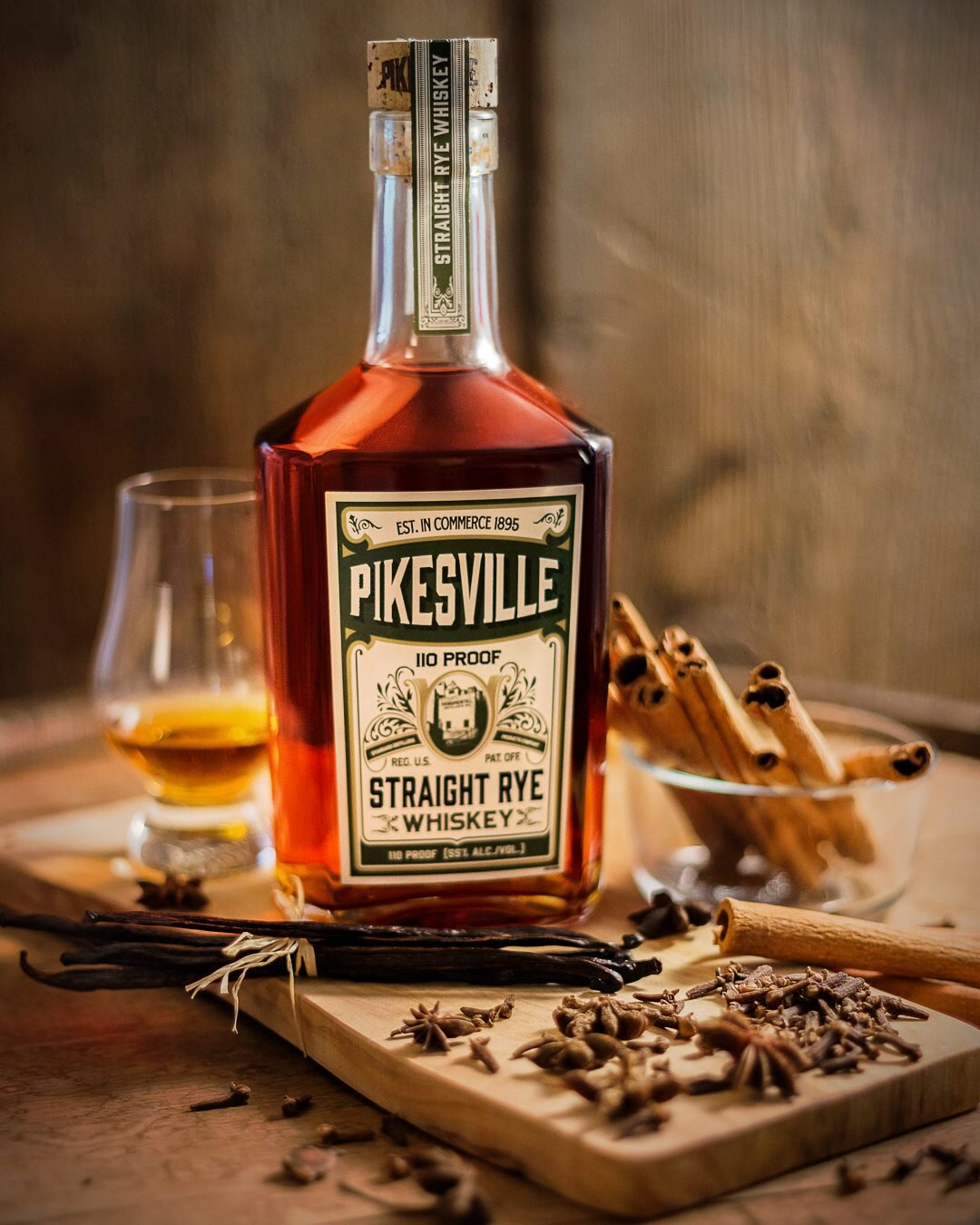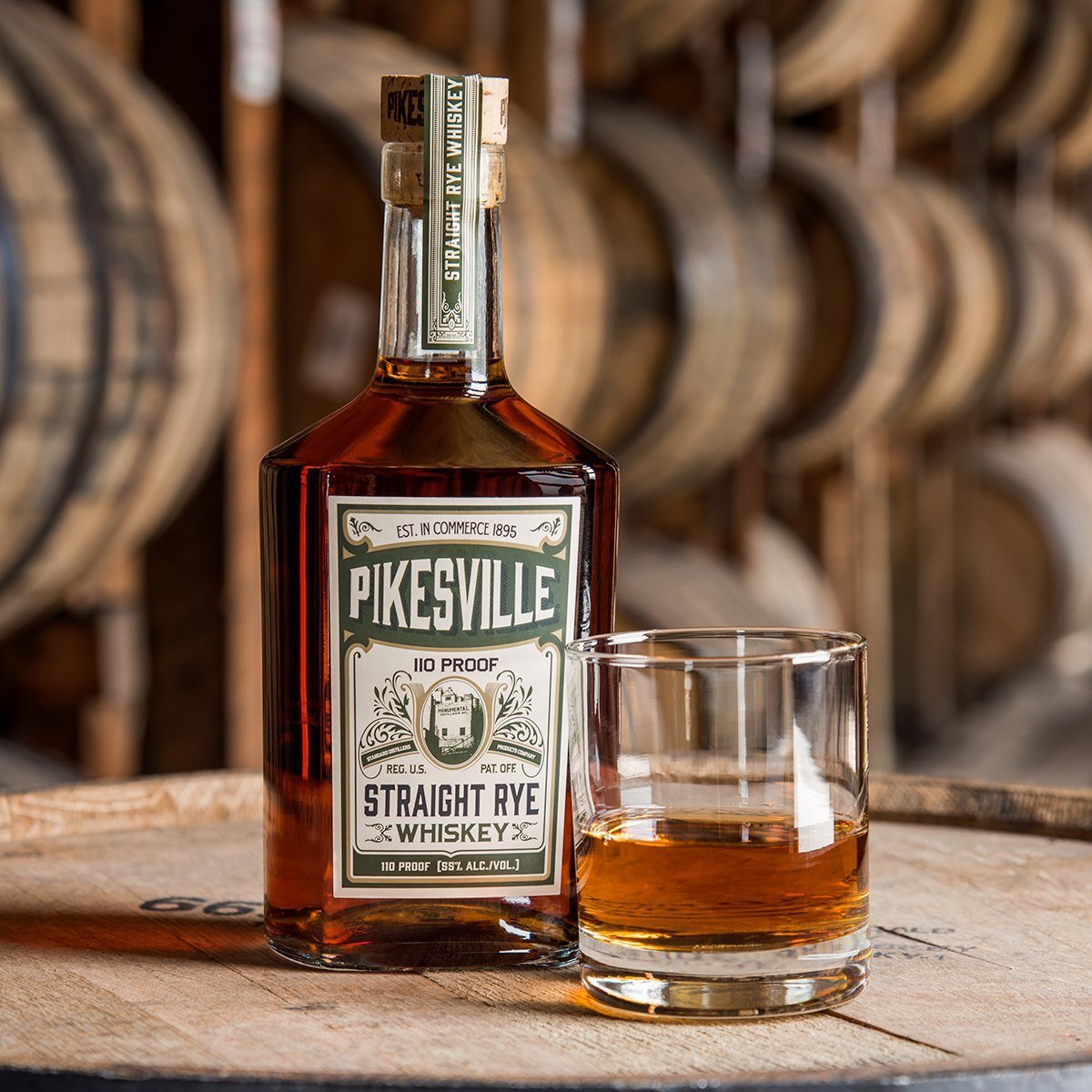Bourbon Season 2021 // Pikesville Straight Rye Whiskey
As I’m writing this, we’re well into the second week of September. We’re supposed to be experiencing gradually colder nights, a bit more fog in the morning, and forests acquiring an ‘earth’ color scheme. Instead, it’s 29°C, and fall seems like a distant relative that’s not very eager to rear its head in your area of the country. Nevertheless, Bourbon Season has started on the blog. The 2021 edition, that is. We’re kicking things off with a Rye Whiskey! Did I mention that, to me, ‘Bourbon Season’ actually stands for ‘whiskeys made in North America’?
Text by Mickaël Van Nieuwenhove
Photography is © thefirstpour.com and © Mickaël Van Nieuwenhove
American Whiskey Terminology: A quick refresher
If you are not an American whiskey connoisseur, you might get lost in a labyrinth of specific terminology surrounding this industry. That’s why I’m adding a glossary explaining the specific words that are mentioned on the Pikesville Rye label. Wikipedia is your friend.
110 Proof = The American way of expression ABV (alcohol by volume). Most hard liquor sold at retail in the United States is between 80 and 95 proof (40 to 47.5% by volume). 110 Proof is about 55% ABV.
Rye whiskey = In the USA, rye whiskey is, by law, made from a mash bill of at least 51 percent rye. The other ingredients in the mash are usually corn and malted barley.
Straight Rye = If Rye whiskey has been matured in newly toasted American oak barrels for at least 2 years, it is called ‘Straight Rye’ whiskey.
American whiskey = American whiskey is whiskey (a distilled beverage produced from a fermented mash of cereal grain) produced in the United States. The primary types of American whiskey are bourbon whiskey, rye whiskey, rye malt whiskey, malt whiskey, wheat whiskey, Tennessee whiskey, and corn whiskey.
Pikesville Straight Rye Whiskey
The history of Pikesville Rye takes us all the way back to its first production in the 1890s in Maryland, the birthplace of a specific type of rye whiskey, Maryland Rye. This specific type of whiskey “has a mash bill of mostly rye, a lot of corn, and a little of something else, usually malted barley but could be wheat or another grain” (marylandspirits.org).
Production disappeared because of Prohibition, then had a bit of a revival, but finally disappeared completely after the Second World War when the distilleries in Maryland closed and the industry’s focus shifted to Kentucky.
However, in the last 10 years, something has been stirring in Maryland again. A new generation of distillers is trying to put Maryland Whiskey back on the map. The only problem, a New York Times article tells me, is that ‘nobody really knows what “Maryland style” actually means’ (nytimes.com). One thing historians and distillers seem to agree on, is that Maryland Rye had a unique flavor profile, less spicy than other rye styles, and ‘more supple, with perhaps a buttery palate’ (nytimes.com). I’ll be on the look for that when I taste the Pikesville Rye.
Speaking of which, the Pikesville Straight Rye brand has been picked up by the Heaven Hill Distillery in Kentucky, which, as we know, used to be Maryland’s biggest competitor. It’s funny how these things twist and turn.
If you want to read more about Maryland Rye, I suggest you start by reading “What is Maryland Rye” by TW Wright, as published by the Maryland Distillers Guild and “Maryland Rye Whiskey Has Finally Returned. But What Was It in the First Place?“ by Clay Risen from The New York Times. The latter makes the case that a true ‘Maryland Rye style’ did not actually exist, and if it did, it probably was not as ‘fixed’ as we want it to be.
But enough about that. Let’s get to the tasting part!
Tasting Notes
Getting to the main event, it’s time to start talking about scents and flavors and textures and finishes and general afterthoughts.
At 6 years old, this rye whiskey is definitely inviting in the nose. There is no sign of this being 110 proof (55% ABV). I’m picking up a familiar ‘bourbon’ theme, with well-known scents such as oak shavings, creamy vanilla, and a hint of chocolate. There’s a little spice in there, a ‘sharper’ note, even a little peppery, which reveals the rye nature of this expression. I couldn’t help but wonder if the distinct rye flavors were also going to be ‘folded’ into the bourbon notes.
The first flavor impression made me think of a warm honey drink, a bit similar to a strong mead, for those of you who know what I’m talking about. It’s a slightly syrupy liquid, and sticks well to the tongue. There’s a spicy note too, which kicks in after first contact. Next, dry notes take over, followed by a drawn out -and delightfully subtle - finish.
While sipping from this rye whiskey, I noticed that as I gradually got familiar with the liquid, the various scents and flavors started to ‘build’ onto each other (or should I say ‘deepens’), turning this into a versatile but convincing expression which can be enjoyed by first-timers and more experienced drinkers. I would certainly recommend checking this one out if you have the chance!
Note: The bottle in this review was gifted by Cinoco Spirits, the Belgian distributor for Heaven Hill Distillery spirits. Many thanks for providing me with this excellent bottle!




